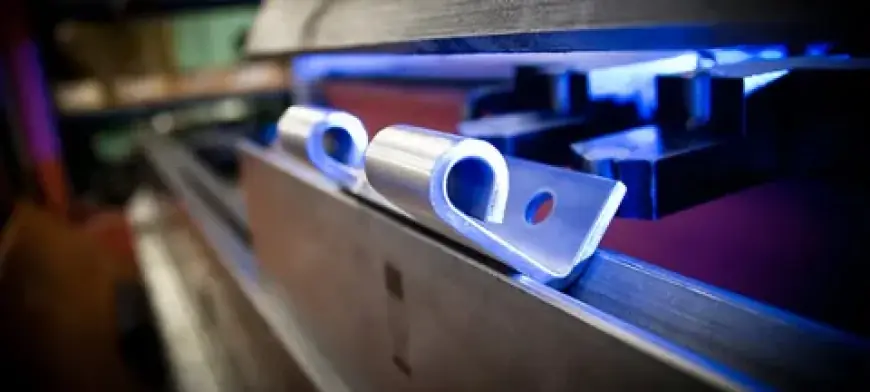Why Sheet Metal Prototyping is the Future of Custom Manufacturing
The versatility of sheet metal prototyping extends across a wide array of industries, making it a go-to solution for various applications.

In the evolving world of custom manufacturing, the demand for faster production times, cost-effective methods, and precision-driven design has never been more critical. As industries continue to grow and innovate, manufacturers are turning to advanced technologies to meet these challenges head-on. One such breakthrough that stands out is sheet metal prototyping. With its ability to provide quick iterations and high-quality results, sheet metal prototyping is quickly becoming a cornerstone of the custom manufacturing process. This article explores why sheet metal prototyping is poised to define the future of custom manufacturing.
Accelerating Product Development Cycles
The traditional process of custom manufacturing involves long and costly timelines, especially when it comes to prototyping. Designing and developing a prototype using conventional methods, such as casting or machining, can be time-consuming, requiring several rounds of revisions before the product reaches its final version. However, sheet metal prototyping has dramatically reduced these timeframes.
With sheet metal prototyping, designers can quickly create accurate prototypes that reflect the exact specifications of the final product. The process involves using computer-aided design (CAD) software to create digital models, which can then be turned into physical prototypes using advanced cutting and forming techniques. This rapid turnaround allows companies to evaluate product designs early on, gather feedback, and make necessary adjustments quickly. The result is a more efficient product development cycle that saves time and resources.
Cost-Effective Production
Cost efficiency is a key factor that manufacturers consider when adopting new technologies. Traditional methods of prototyping, such as injection molding, often require expensive molds and tooling, which can lead to significant upfront costs. These expenses can be a major barrier for small businesses or startups looking to develop custom products. Sheet metal prototyping, on the other hand, offers a cost-effective alternative.
The flexibility of sheet metal prototyping means that manufacturers can create custom prototypes without the need for expensive molds or specialized equipment. Instead, techniques like laser cutting, punching, and bending are employed to shape the metal into the desired design. This results in lower initial costs and allows businesses to allocate resources more effectively. Additionally, because sheet metal is relatively inexpensive compared to other materials like plastic or composites, the overall production costs remain manageable.
Enhanced Precision and Customization
When it comes to custom manufacturing, precision is paramount. Manufacturers need prototypes that closely match the final product’s design to ensure that all components fit and function as intended. Sheet metal prototyping excels in this area, providing high levels of accuracy and customization.
With the use of advanced technologies such as CNC machines and laser cutters, manufacturers can achieve tight tolerances and create prototypes with exceptional precision. This level of accuracy ensures that the prototype functions just like the final product, allowing engineers and designers to identify potential issues before moving on to mass production. Moreover, sheet metal can be easily customized to meet the specific needs of each project, making it an ideal material for a wide range of industries, from automotive to aerospace.
Versatility Across Industries
The versatility of sheet metal prototyping extends across a wide array of industries, making it a go-to solution for various applications. Whether it’s for automotive parts, consumer electronics, medical devices, or industrial machinery, sheet metal can be adapted to meet the unique demands of each sector. The process offers designers the flexibility to experiment with different shapes, sizes, and material types, ensuring that the final product meets both functional and aesthetic requirements.
For example, in the automotive industry, sheet metal prototyping is used to create complex parts such as body panels, engine components, and structural elements. In electronics, sheet metal is often used for enclosures, connectors, and other precision parts. The ability to use the same prototyping techniques across such diverse sectors highlights the immense potential of sheet metal in custom manufacturing. As more industries embrace the technology, the demand for sheet metal prototyping is expected to grow, further cementing its role as a key enabler of custom manufacturing.
Sustainability and Waste Reduction
In today’s manufacturing environment, sustainability has become a top priority. With the growing focus on reducing environmental impact, companies are seeking ways to minimize waste and use resources more efficiently. Sheet metal prototyping presents a sustainable option for businesses looking to reduce their carbon footprint while maintaining high-quality production standards.
One of the main advantages of sheet metal is that it can be easily recycled, making it an environmentally friendly material choice. Additionally, the precision of modern sheet metal prototyping techniques allows for minimal material waste during the manufacturing process. Laser cutting, for example, produces clean cuts with minimal scrap, while methods like waterjet cutting reduce the need for excessive material removal. By embracing sheet metal prototyping, manufacturers can not only save on material costs but also contribute to a more sustainable future for the industry.
Conclusion
Sheet metal prototyping is undeniably the future of custom manufacturing, offering faster production times, cost-effective solutions, and high precision. With its ability to accelerate product development, reduce costs, and offer unmatched customization, sheet metal prototyping is becoming a game-changer in industries ranging from automotive to consumer electronics. As technology continues to advance, the role of sheet metal prototyping in custom manufacturing will only grow, shaping the future of how products are designed, developed, and brought to market. By leveraging its many advantages, manufacturers can stay ahead of the competition and meet the demands of a fast-paced, ever-changing industry.












